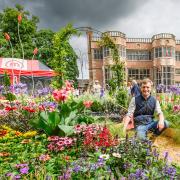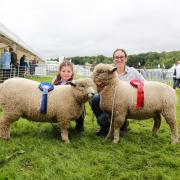A meadow of orchids greets visitors at Heysham Nature Reserve – luscious greenery filled with yellows and purples up the hill beside the visitor centre. Butterflies and day-flying moths love this place, it is such an exciting start to any visit.
I can lean against the fence and stare at this meadow for minutes on end, the longer you wait the more you will see. You notice movement and it’s not just the breeze, many varieties of flies, wasps and bees will be helping to pollinate the plants around here. Small skipper, common blue and small copper butterflies will be around all summer, as well as hundreds of five and six-spot burnet moths.
As you walk into the woodland other insects will appear. There are speckled wood butterflies, I actually saw some as late as October last year. If the food is around, the butterflies will continue to fly even when it gets colder. The best time to see these amazing insects is in summer when the sunlight dapples through the woodland and they come to rest on the biggest leaf they can find, stretching out their wings to catch some rays.

Dragonflies and damselflies add dabs of colour to the reedbed and ponds at the bottom of the reserve. There is a pond-dipping platform where schoolchildren can catch all kinds of pond life, while watching the damselfly ballet happening in front of them. More than 1,500 children attend education events at the reserve every year.
I am convinced that dragonflies and damselflies flying around so daintily are the reason we believe in fairies. I could be wrong, there could actually be fairies mixing into the melee, and I am just not young enough to see them.
You need to head to the edge of Heysham and down a quiet road to find the reserve, but I am surprised you don’t hear it from far afield in spring and summer. Dawn choruses here are immense with meadow pipits, sedge warblers, whitethroats, chiffchaffs, greenfinches, linnets and grasshopper warblers just some of the breeding species.

Look out for blue tits coal tits, goldfinches, wrens, dunnocks, long-tailed tits and great spotted woodpecker. Rare birds sometimes rock up here too, including wryneck, night heron, bee-eater, serin, woodchat shrike and yellow-browed warblers from Siberia.
Many of our nature reserves rely on support from local businesses and Heysham Nature Reserve has a great relationship with Heysham port and the power station, owned by EDF Energy, who provide financial support.
In return, workers from the power station can wander down to enjoy the nature at the reserve. There is a lovely picnic area where you can sit and chill out.
Or pop into the visitor centre and learn about the reserve and its inhabitants. You could tell us about the wildlife you have seen. We need more people to take these simple actions for nature. Eventually we will get one in four people performing at least one action for nature, helping to halt or even reverse the biodiversity crisis affecting the region, the UK and the planet. Let’s start making a change here in Lancashire.
More details on our actions for nature can be found at lancswt.org.uk.



























